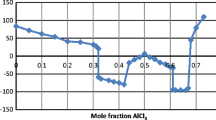Abstract
A series of quaternary amonium (QA) ions were used to probe the gross architecture of the ion conduction pathway in a Ca2+-activated K+ channel from rat muscle membrane. The channels were inserted into planar phospholipid membranes and the single channel currents were measured in the presence of the different QA ions. Internally applied monovalent QA ions (e.g. tetramethylammonium and analogues) induced a voltage-dependent blockade with a unique effective valence of the block equal to 0.30, and blocking potency increases as the compound is made more hydrophobic. Blockade is relieved by increasing the K+ concentration of the internal or external side of the channel. The effective valence of block is independent of K+ concentration. These results suggest that, from the internal side, all monovalent QA ions interact with a site located in the channel conduction system. Divalent QA ions of the type n-alkylbis-α,β-trimethylammonium (bisQn) applied internally also block the channel in a voltage dependent fashion. For short chains (bisQ2-bisQ5), the effective valence decreases with chain length from 0.41 to 0.27, it remains constant for bisQ5 to bisQ6 and increases up to 0.54 for bisQ10. This dependence of block with chain length implies that 27% of the voltage drop within the channel occurs over a distance of ≈ 1 nm. Externally applied monovalent QA ions also block the channel. The site is specific for tetraethylammonium; increasing or decreasing the side chains in one methylene group decrease potency by about 400-fold. It is concluded that the Ca2+-activated K+ channel has wide mouths located at each end and that they are different in molecular nature.
Similar content being viewed by others
References
Armstrong CM (1969) Inactivation of the potassium conductance and related phenomena caused by quaternary ammonium ion injection in squid axons. J Gen Physiol 54:553–575
Armstrong CM (1971) Interaction of tetraethylammonium ion derivatives with the potassium channels of giant axons. J Gen Physiol 58:413–437
Armstrong CM (1975a) Potassium pores of nerve and muscle membranes. In: Eisenman G (ed) Membranes: a series of advances, vol 3, chapter 5. Dekker, New York Basel, p 325
Armstrong CM (1975b) Ionic pores, gates and gating currents. Q Rev Biophys 7:179–210
Armstrong CM, Hille B (1972) The inner quaternary ammonium ion receptor in potassium channels of the node of Ranvier. J Gen Physiol 59:388–400
Blatz AI, Magleby KL (1984) Ion conduction and selectivity of single calcium-activated potassium channels in cultured rat muscle. J Gen Physiol 84:1–23
Cecchi X, Alvarez O, Wolff D (1986) Characterization of a calcium-activated potassium channel from rabbit intestinal smooth muscle incorporated into planar bilayers. J Membr Biol 91: 11–18
Cecchi X, Wolff D, Alvarez O, Latorre R (1987) Mechanisms of Cs+ blockade in a Ca2+-activated K channel from smooth muscle. Biophys J 52:707–716
Dani JA (1986) Ion-channel entrances influences permeation. Net charge, size, shape and binding considerations. Biophys J 49:607–618
Danko MC, Smith-Maxwell L, McKinney, Begenisich T (1986) Block of sodium channels by internal mono- and divalent guanidinium analogues. Biophys J 49:509–519
Eisenman G, Latorre R, Miller C (1986) Multi-ion conduction and selectivity in the high-conductance Ca++-activated K+ channel from skeletal muscle. Biophys J 50:1025–1034
FitzHugh R (1983) Statistical properties of the asymmetric random telegraph signal, with applications to single channel analysis. Math Biosci 64:75–89
French RJ, Shoukimas JJ (1981) Blockade of squid axon potassium conductance by internal tetra-n-alkylammonium ions of various sizes. Biophys J 34:271–291
French RJ, Shoukimas JJ (1981) An ion's view of the potassium channel. The structure of the permeation pathway as sensed by a variety of blocking ions. J Gen Physiol 85:669–698
Hermann A, Gorman ALF (1981) Effects of tetraethylammonium on potassium channels in a molluscan neuron. J Gen Physiol 78:87–110
Hille B (1967) Quaternary ammonium ions that block the potassium channels of nerves. Abstract 11th. Biophysical Society Meeting, pp 19
Hille B, Schwarz W (1978) Potassium channels as multi-ion singlefiles pores. J Gen Physiol 72:409–442
Latorre R (1986) The large calcium-activated potassium channel. In: Miller C (ed) Ion channel reconstitution, chapter 17 Plenum Press, New York, p 431
Latorre R, Vergara C, Hidalgo C (1982) Reconstitution in planar lipid bilayers of a Ca2+-activated K+ channel from transverse tubule membranes isolated from rabbit skeletal muscle. Proc Natl Acad Sci USA 77:7484–7486
Miller C (1982) Bis-quaternary ammonium blockers as structural probes of the sarcoplasmic reticulum K+ channel. J Gen Physiol 79:869–891
Moczydlowski E, Latorre R (1983) Saxitoxin and ouabain binding activity of isolated skeletal muscle membrane as indicators of surface origin and purity. Biochim Biophys Acta 732:412–420
Sigworth F (1983) Electronic design of the patch clamp. In: Sakmann B, Neher E (eds) Single channel recording. Plenum Press, New York, pp 3–35
Stanfield PR (1983) Tetraethylammonium ions and the potassium permeability of excitable cells. Rev Physiol Biochem Pharmacol 79:1–67
Swenson RP Jr (1981) Inactivation of potassium currents in squid axon by a variety of quaternary ammonium ions. J Gen Physiol 77:255–271
Vergara C (1983) Characterization of a Ca2+-activated K+ channel from skeletal muscle membranes in artificial bilayers. Ph. D. Dissertation, Harvard University, Cambridge, MA
Vergara C, Moczydlowski E, Latorre R (1984) Conduction, blockade and gating in a Ca2+-activated K+ channel incorporated into planar bilayers. Biophys J 45:73–76
Villarroel A, Eisenman G (1987) Surface charge in a barrier model can explain the low concentration I–V behavior of the Ca++-activated K+ channel. Biophys J 51:546a
Wong BS, Adler M (1986) Tetraethylammonium blockade of calcium-activated potassium channels in clonal anterior pituitary cells. Pflügers Arch 407:279–284
Woodhull AM (1973) Ionic blockade of sodium channels in nerve. J Gen Physiol 61:687–708
Yellen G (1984a) Ionic permeation and blockade in Ca2+-activated K+ channels of bovine chromaffin cells. J Gen Physiol 84:157–186
Yellen G (1984b) Relief of sodium block of Ca2+-activated K+ channels by external cations. J Gen Physiol 84:187–199
Author information
Authors and Affiliations
Rights and permissions
About this article
Cite this article
Villarroel, A., Alvarez, O., Oberhauser, A. et al. Probing a Ca2+-activated K+ channel with quaternary ammonium ions. Pflugers Arch. 413, 118–126 (1988). https://doi.org/10.1007/BF00582521
Received:
Revised:
Accepted:
Issue Date:
DOI: https://doi.org/10.1007/BF00582521




